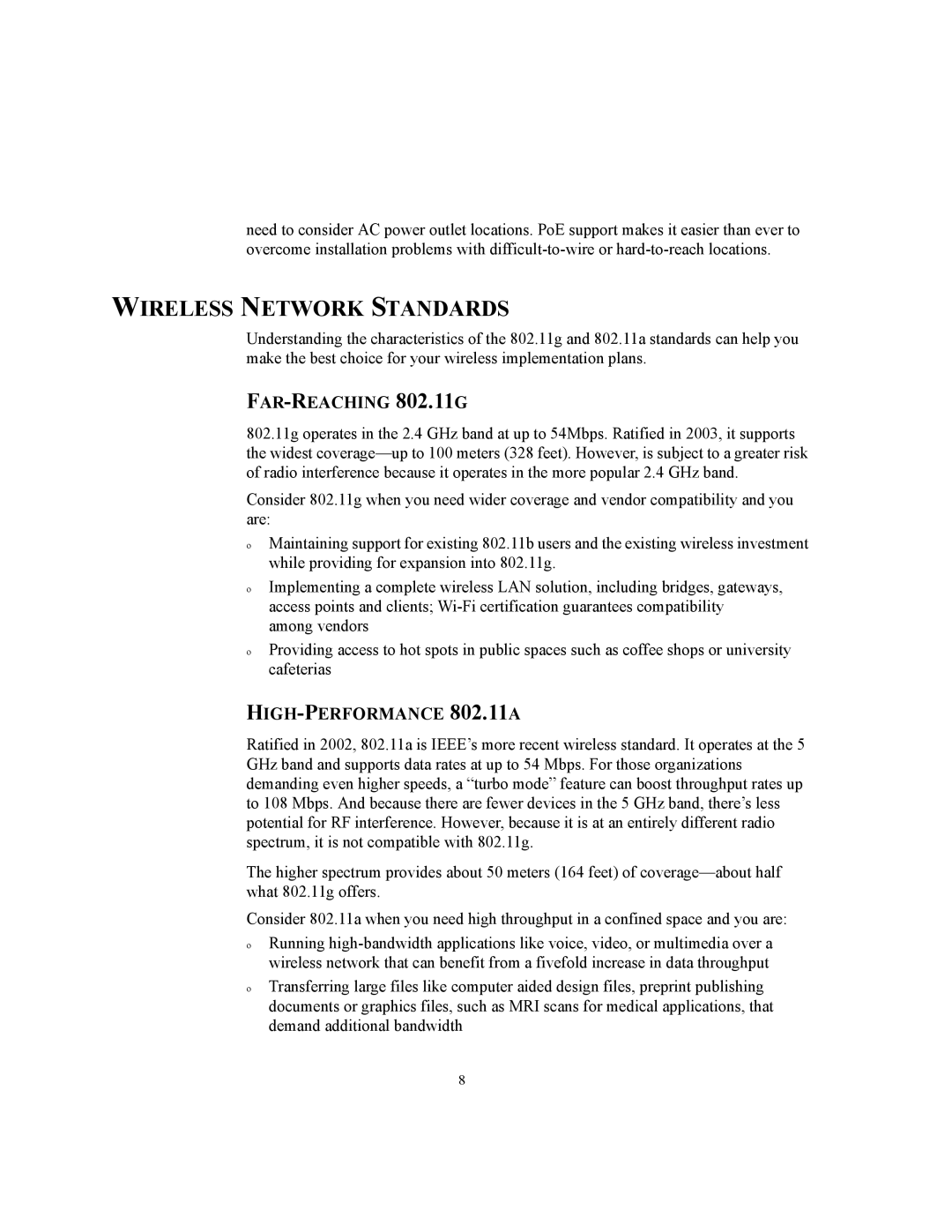need to consider AC power outlet locations. PoE support makes it easier than ever to overcome installation problems with
WIRELESS NETWORK STANDARDS
Understanding the characteristics of the 802.11g and 802.11a standards can help you make the best choice for your wireless implementation plans.
FAR-REACHING 802.11G
802.11g operates in the 2.4 GHz band at up to 54Mbps. Ratified in 2003, it supports the widest
Consider 802.11g when you need wider coverage and vendor compatibility and you are:
oMaintaining support for existing 802.11b users and the existing wireless investment while providing for expansion into 802.11g.
o
o
Implementing a complete wireless LAN solution, including bridges, gateways, access points and clients;
Providing access to hot spots in public spaces such as coffee shops or university cafeterias
HIGH-PERFORMANCE 802.11A
Ratified in 2002, 802.11a is IEEE’s more recent wireless standard. It operates at the 5 GHz band and supports data rates at up to 54 Mbps. For those organizations demanding even higher speeds, a “turbo mode” feature can boost throughput rates up to 108 Mbps. And because there are fewer devices in the 5 GHz band, there’s less potential for RF interference. However, because it is at an entirely different radio spectrum, it is not compatible with 802.11g.
The higher spectrum provides about 50 meters (164 feet) of
Consider 802.11a when you need high throughput in a confined space and you are:
oRunning
oTransferring large files like computer aided design files, preprint publishing documents or graphics files, such as MRI scans for medical applications, that demand additional bandwidth
8
